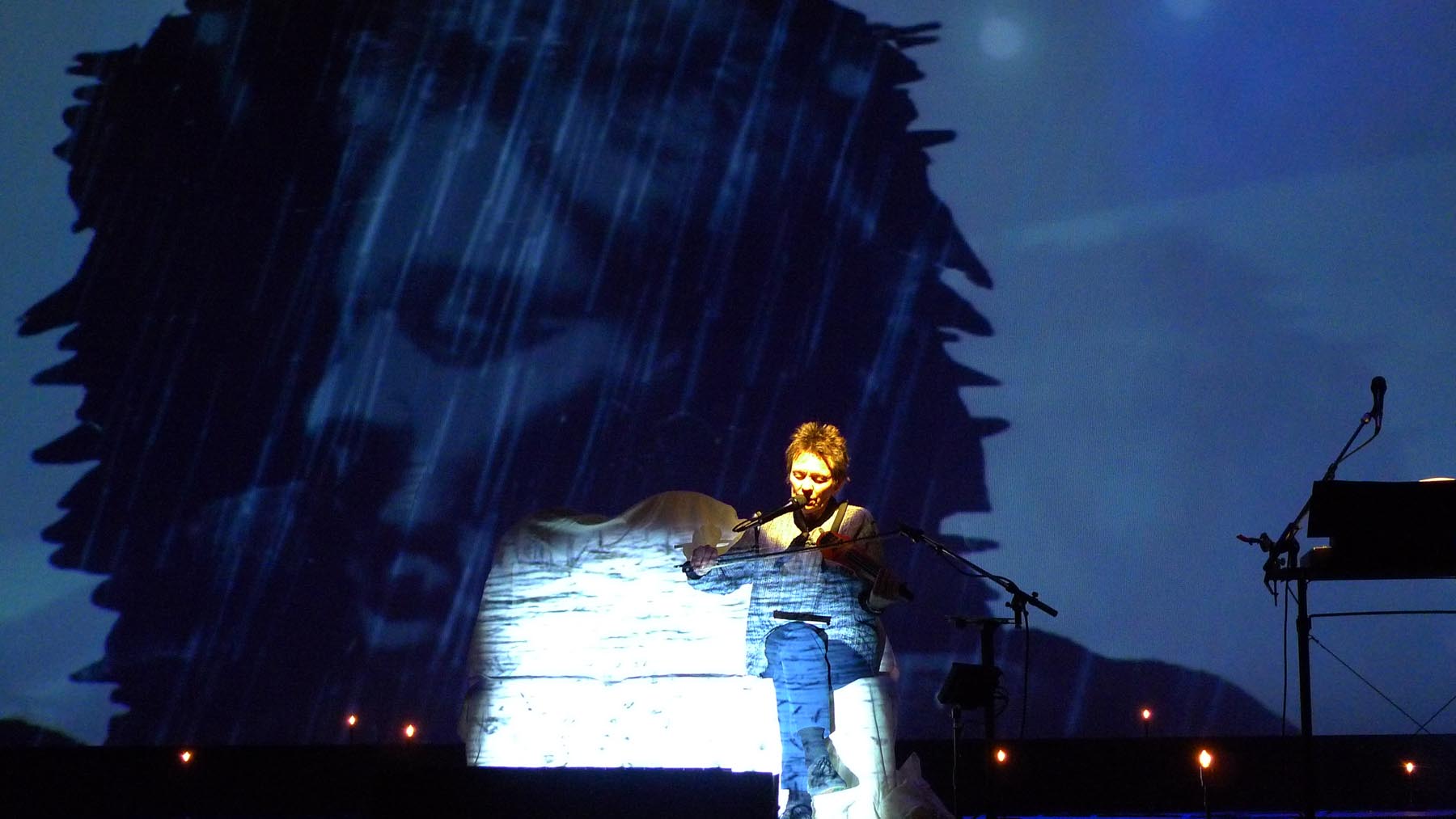Posted by Matthew Caron
Laurie Anderson’s “Delusion,” now being staged as the opening feature of the Brooklyn Academy of Music’s Next Wave Festival, begins with the words “I want to tell you a story” and ends with the question “Did you ever really love me?” The space between the statement of intent and the final query finds Anderson in a more somber and backward-glancing mode than earlier her works, with death and existential crises taking center stage. Loosely constructed around a series of anecdotes and peculiar dreams, “Delusion” concerns itself with peculiar itches in the back of the mind, visions seen out of the corner of the eye, hallucinations registered at moments of birth and death. “Delusion” recalls the monologue performances of her late sometimes-collaborator Spalding Gray, especially as concerns Anderson’s preoccupation with death and reincarnation and ecstatic states. The hook seems to be that our most painful and formative revelations are arrived at through delusion, a vehicle that has carried mankind through the lonely and lunar stretches of countless lifetimes.
Anderson states that “Delusion” is an exploration of the intersections between history and myth, but by the end I felt as though the real thrust was that delusion and visionary states are the ultimate human survival tool. Early in the show she laments that there are limits to her personal carrot-on-a-stick system of effort and reward; something larger and visionary is necessary. Her stint as NASA’s first artist-in-residence figures into the piece with several tangents about the moon, an appropriately large symbolic tool if ever there was one. One story pinpoints the birth of the Russian space program in the writings by a 19th century mystic who suggests that the particles of our dead ancestors reside on the moon and hold the key to our own immortality. In yet another, Anderson describes an ongoing international dispute over ownership of the moon and how various nations have made their claim on the orb on the basis of who saw it first, who got there first, who will get there next and who will be there last. Perhaps the most interesting is her accounting of a 5000 year plan within NASA to relocate the Earth’s plastics and toxins to the moon, to be combined with extreme population control in an effort to return Earth to “The Garden of Eden State, whatever that is”. Even our most sophisticated scientists and leaders are driven, apparently, by the ecstatic and delusional.
Like an astronaut, Anderson pilots her show from a lectern flanked by her electronics and computer when she is not orbiting the stage through a constellation of star-like lights which dot the black space of the theater’s floor. A loveseat draped in a white sheet functions as a cocoon, a hospital bed and halo when she rests upon it to spin her most heartbreaking and odd tales. She’s joined at a few junctures by saxophonist Colin Stetson and violist Eyvind Kang, but primarily she flies solo through the strange and melancholy stories and visions on display. Videos orchestrated by Anderson with collaborators Amy Khoshbin and Maryse Alberti (the cinematographer behind Darren Aronofsky’s “The Wrestler”) are projected throughout onto a large screen dominating the stage’s back wall, the multifaceted loveseat, and two smaller screens that shield Mr. Stetson and Mr. Kang. The video alternately functions as light source, chalkboard, dream cinema and atmosphere generator; noirish images of smoke, curtains, rain and autumn leaves recur throughout to underscore Anderson’s wistful recollections of past dreams and conversations with the dead. The effect is that of a movie unfolding in real-time narrated, scored and to a lesser extent acted out by Anderson. The devices, delivery and trappings are all familiar – present are the electrified stick violin and digitally enhanced character voices that have been constants in Anderson’s repertoire since the early 1980s – but the autumnal air and preoccupation with human consciousness beyond life and rationality is something new, and something that has been missing generally since Spalding Gray’s final exit from the stage several years ago. It’s refreshing to once again spend 90 minutes in thrall to an artist whose power over language moves so effortlessly between ironic pleasure and existential dread.

